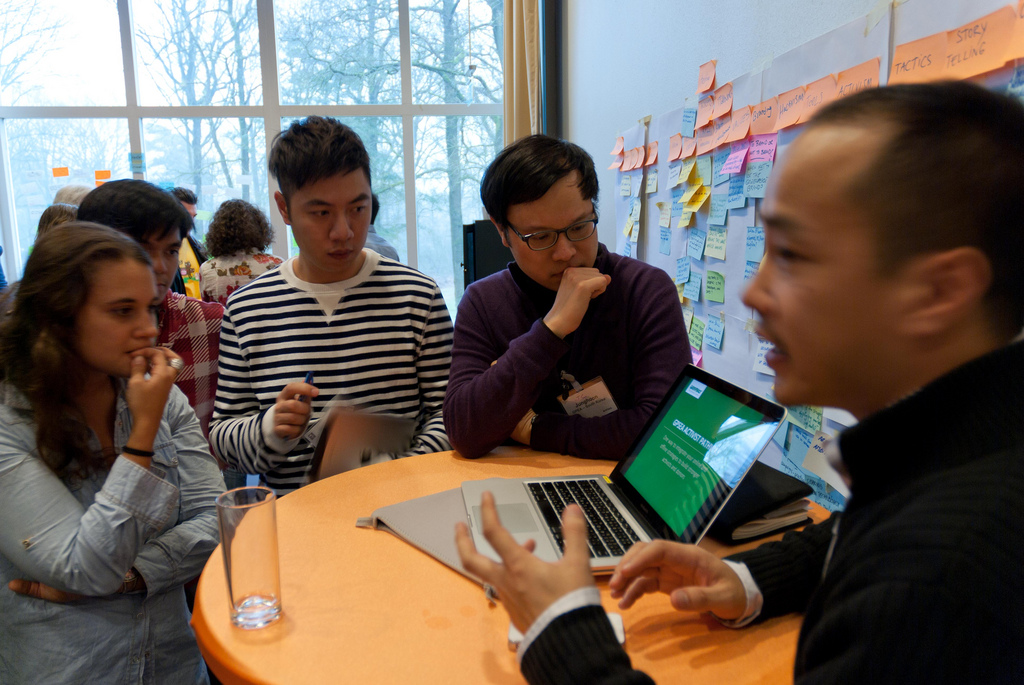A session at the 2014 Digital Mobilisation Skillshare explored ways that organisations are promoting and supporting grassroots-led campaigning to achieve bigger results. Theo Gubler of Greenpeace Switzerland talked about the Swiss anti-nuclear campaign, the “People Power Surge against Nuclear.”
Greenpeace-trained volunteers set up their own, independent campaign, the “People Power Surge against Nuclear” (Menschenstrom gegen Atom) against new nuclear plants, mobilised thousands and got the government to drop plans for new installations.
What was the problem?
Nuclear power was established in Switzerland and there was not strong public opposition. The government put forward proposals to build three new nuclear facilities. Greenpeace Switzerland knew that it needed to reach outside its existing networks to build an effective opposition.
What happened?
In 2007 Greenpeace Switzerland offered training on “Open campaigning on the nuclear issue” to around 60 volunteers, recruited by an open process through its own networks, and also via other environmental NGOs and unions. The training, dubbed the “Particle Accelerator” (Teilchenbeschleuniger) was thorough – 20 days in total over 7 months – and aimed to give the activists tools and approaches, but allow them to decide for themselves what to do next.
Some of the trainees took this forward in the form of a new organisation which they called the “People Power Surge against Nuclear” (Menschenstrom gegen Atom) and built a coalition around the issue.
A 2010 demonstration at a proposed development site in the countryside attracted over 5,000 people. The following year, after the Fukushima nuclear reactor disaster, over 20,000 came to an event at one of the other sites. Shortly afterwards the government dropped plans for new nuclear facilities.
The group had helped move the conversation in Switzerland to start challenging the existing reliance on nuclear, mobilising 8,000 people at a demo at an existing facility in 2012, and organising an Energy Transition Camp event in 2013.
What was people-powered about this campaign?
Greenpeace Switzerland may have provided the training and initial impetus for the campaign, but its form, messages, and crucially the actual organising work, was carried out by volunteers under their own banner, telling the story in their own way.
Getting funding together for the initial training took courage and vision without any guarantee that this model would pay off. But in the end it did so powerfully. Greenpeace Switzerland couldn’t have mobilised that many people to a demo on its own and would have struggled to resource the campaign itself. It provided an opportunity and support for volunteers to do real work.
It also provided an important chance to develop grassroots leaders. One of the original trainees went on to make the lead speech to thousands of people at the second demonstration.
Providing support and advice without Greenpeace ownership, as well as financial help as part of the supporting coalition, paid off in terms of the strength and direction of the volunteer campaigners.
The high level of engagement in the 2011 demonstration was partly triggered by reaction to the Fukushima disaster. But by developing the skills of grassroots leaders, the capacity was there to respond and scale up in response.
What did Greenpeace add?
Without the opportunity of the initial training it’s unlikely that the volunteer network would have come together in the first place. It was a risk to offer the training, relying on trust that the grassroots would deliver. It meant substantial investment from Greenpeace Switzerland without a guaranteed return.
Greenpeace Switzerland also helped with ongoing advice and logistical support for the group.
Categories:
organising, mobilising and engagement


